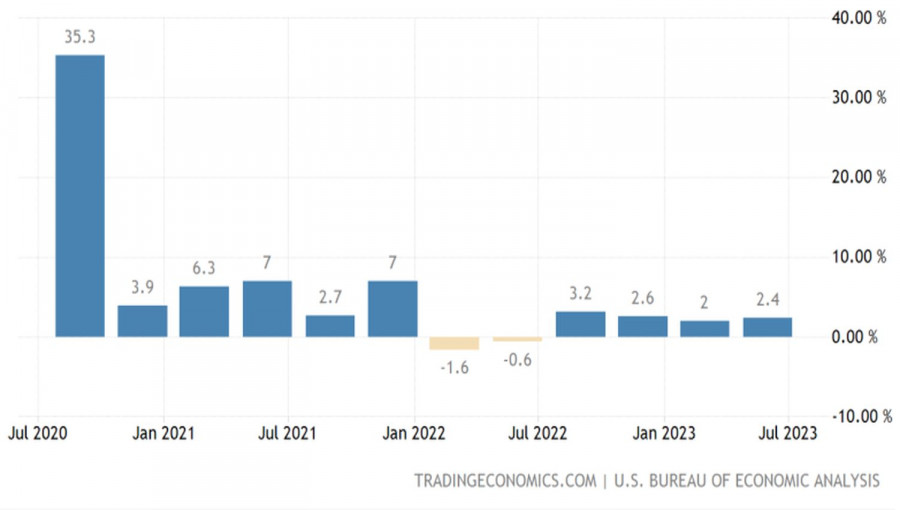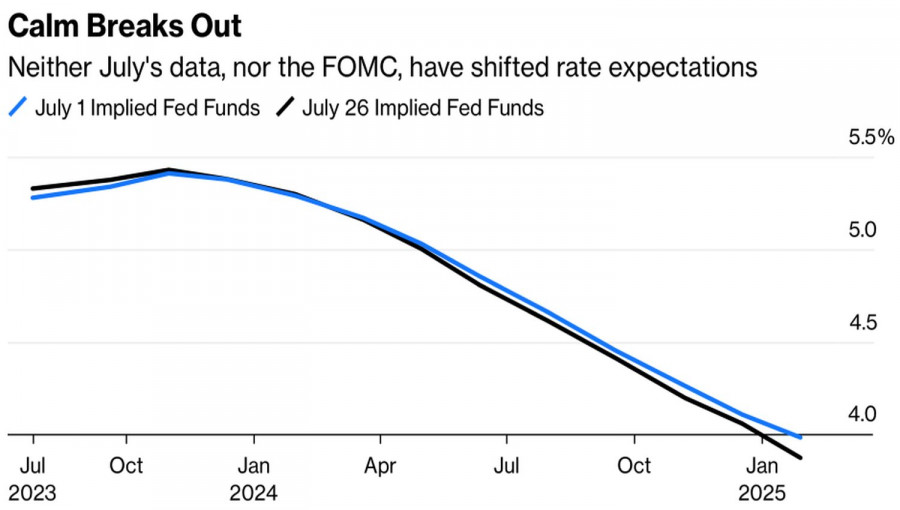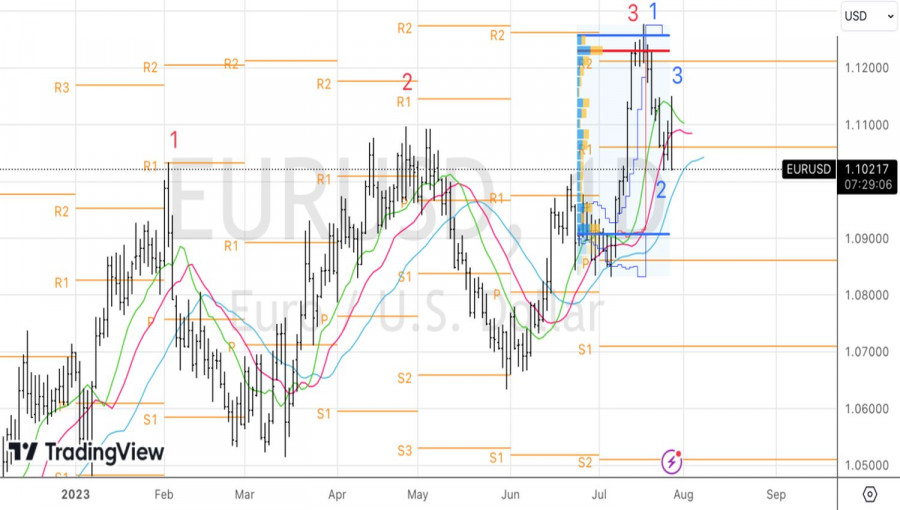
Getting the truth about central bank interest rates right now is like trying to draw blood from a stone. Both the Federal Reserve and the European Central Bank base their monetary policies on data. The slowdown in inflation in both the US and the eurozone hints that the July rate hike may be the last for both central banks. It's no wonder that EUR/USD experienced wild swings.
While Fed Chair Jerome Powell's vague statements dealt a blow to the US dollar, the 2.4% growth in US GDP in the second quarter, combined with the ECB's reluctance to give any indication of reaching a rate that would quickly bring inflation back to 2%, knocked EUR/USD out. The US is expanding faster than it was at the beginning of the year and looks better than Bloomberg experts predicted. Amid the eurozone's balancing act between stagnation and recession, the US shines as a bright spot on the dark backdrop of the global economy. No wonder the euro is falling against the US dollar, as the factor of American exceptionalism comes into play.
US GDP
In fact, it could have supported the euro as a pro-cyclical currency if both China and the eurozone were also doing well along with the US. However, since this is not the case, the rally in EUR/USD will have to be postponed. Especially since the ECB's future decisions on interest rate hikes are dependent on data. Monetary policy divergence is no longer playing in favor of the bulls in the main currency pair.
The increase in the deposit rate to a record high of 3.75% did not help either. This was last seen in 2001. Such a move was already priced into EUR/USD quotes, and investors were expecting more hawkish rhetoric and signals of continuing the cycle of monetary tightening in September. They didn't get it. The result of this disappointment can be seen on the charts - the euro collapsed.
In this regard, Powell's speech can be considered more balanced. He talked about the strength of the US economy, which could raise inflation in the future. He also mentioned that the Bank has made significant progress, and expressed satisfaction with the latest FOMC forecasts. In other words, the information was so contradictory that market expectations for future interest rate dynamics hardly changed.
Market expectations for the Fed rate

Unlike the Fed chair, who stated that a recession is no longer considered a base-case scenario, ECB President Christine Lagarde bluntly laid out the truth. She admitted that the near-term prospects for the eurozone economy are grim due to the deterioration in domestic demand. However, she believes that the slowdown in inflation will contribute to the GDP recovery. What can I say? That's when we will start buying euros!
Technically, on the EUR/USD daily chart, after the Three Drive pattern (also known as Three Indians), the 1-2-3 formation is a dangerous mix. It increases the risks of a reversal of the existing trend. In addition, falling below the corrective low near $1.102 would be a reason to form short positions.